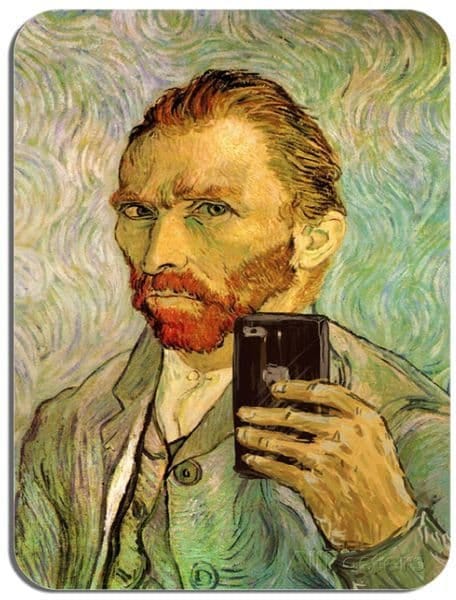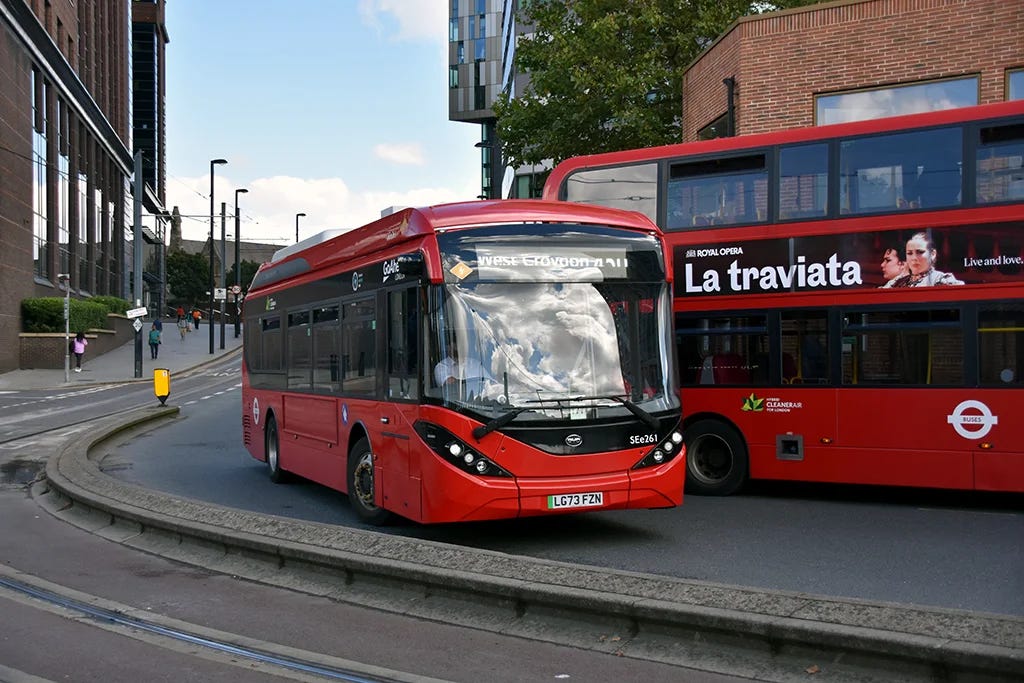This sounds like sour grapes, and maybe it is, but stay with me. I was keen to deliver a second helping of Dead Famous, a 3-part series on Radio 4 earlier this year. The first series was well received. Reviewed, even! Plus, it’s up for an International Broadcasting award. So, all good. If by any chance you missed it, here’s a link. Each show studied an artist who died in relative obscurity, and looked at how they then became extremely famous, tracing their posthumous status from unknown bod to artist whose work is now everywhere, from film to Athena posters, mouse-mats and fridge magnets. Even if their self-portraits have become selfies.
Van Gogh brandishing a mobile phone.
Series One looked at van Gogh, Vermeer and Frida Kahlo. Household names, you will agree. That was the point. Series Two was going to examine equally beloved artists including Botticelli and Caravaggio. Or was it Mogdiliani? Who knows, because it was turned down.
Apparently it got the thumbs down because the Radio 4 arts commissioner already knew about these artists and their stories. He wanted unfamiliar artists to be profiled. He wanted to be surprised. He did not want the story behind this T shirt.
Once I had got over the rejection of my brilliant idea (see Medusa’s face for my actual response), I thought that while one might expect a Radio 4 arts commissioner to know the history of Vermeer’s auction records or van Gogh’s commercialisation, many, many people do not. They might recognise Girl with a Pearl Earring, or the Medusa above, but not know who painted her. Equally, they might love to hear more details about an artist such as Frida Kahlo whose work they already vaguely know and admire. People like to know and hear more about familiar artists. If you are embarking on a knowledge of art and the art world, it’s best to start with what you know.
Furthermore, as exposure to history of art and classical music speedily diminishes in the national curriculum, many art institutions and outlets these days who insist on promoting obscure musicians or painters might well find themselves preaching solely to the tiny minority who have studied in establishments such as specialised music schools, or private schools offering History of Art A Level. Which is fine if you don’t want to have a big audience. Turn on Radio 3 for that. Radio 3 is wonderful, but specialised. To get a wide audience, you need to showcase artists who are already known by as many people as possible.
Commercial galleries understand this. Hence the vogue for ‘Immersive’ experiences like this one showing the greatest hits of David Hockney, blown up to gargantuan proportions in a purpose-built arena beside Kings Cross. You might not like these shows. I might not like them. But they are ferociously successful. They might not be as compelling as the actual canvases, but they are a gateway drug. An experience of van Gogh on Brick Lane might lead to an experience of the huge Van Gogh show currently at the National Gallery.
Critics have a knee-jerk response to the arrival of any show which is overtly ‘popular’. Witness coverage of the current Monet exhibition at the Courtauld, described by the Guardian as “one of the most hyped exhibitions of the year”. Only then does the writer admit “the hype is justified.” The Courtauld, (which has just secured over £9 million independent funding from the Manton Foundation for a new arts hub), has always had a beady commercial overview. So give people something familiar, but do it well, and you will be quids-in. The show is almost totally sold out.
I’m sometimes asked by people how they should get into opera. I advise them to firstly take some time listening to Classic FM, which is a sort of audio version of an immersive van Gogh experience. Put it on and within about 15 minutes you are bound to hear either the Habanera from Carmen, the overture from the Marriage of Figaro or the Queen of the Night’s aria from Magic Flute. Or something from La Boheme. Then search productions of those operas out, even if by an amateur group in a pub theatre, because it will be recognisable. Nobody wants to sit through three hours of Michael Tippett’s Midsummer Marriage as their first opera.
This is why the programming at Opera North or its London counterpart, English National Opera is so inspired. This season both companies are putting on ‘difficult’ operas by Benjamin Britten; Midsummer Night’s Dream in the north, Turn of the Screw in the capital. But look again at the whole of the season and we find The Magic Flute in Leeds, and The Marriage of Figaro in London. Meanwhile Le Traviata, also a Classic FM golden oldie, is packing them in at the Royal Opera House, Covent Garden.
The Arts Council of England might wring its hands over the cost of opera and its perceived exclusivity, and bring out a report (see here if you are intrigued) which suggests that state funded companies really ought to step away from Carmen and her friends, and put on radically new stuff, but if you are spending upward of £50 on a single ticket, and you aren’t an opera buff, you are going to want to try out something where you know at least one of the arias, or the overture. Even if you recognize it from an advert for just one of these lovely ice-creams.
Radio 4 arts commissioners ought to remember that while they might be experts, not everyone who listens to the radio is an art connoisseur. The whole point about a general speech network is to catch a huge audience of non-specialists. Many listeners will know little more about van Gogh than the fact that he cut his ear off. But the fact that they know about the ear is enough to make them curious to want to know more. Or maybe this commissioner just hated my idea. That is of course always possible.










I couldn't agree more with your words. The argument that people already know what sounds familiar is moot. As you point out, the fact that Van Gogh cut his own ear is probably what most people 'know' and one assumes the programme doesn't cater to a small group of those who are versed in art history.
Which brings us to another issue, the confusion between actual knowledge and mere information. At a time when the latter is at everyone's fingertips, it is worth distinguishing who provides knowledge, in the sense they have already studied the subject, instead of dishing out wiki facts. However, that requires a discerning radio programmer. A tall feat!
Great piece, and as an art critic, I concur. The tricky element is balancing this with diversity, many people advocating for more diverse representation in our major museums understandably get annoyed by another Andy Warhol, Picasso, Monet, Van Gogh - insert the many other famous Western white men within this category - exhibition. When there are so many other voices not getting shown.
However, I also understand the need to give people what they want and the names above are guaranteed to sell well and bring in the crowds. Which has become more important given cuts to arts funding. It's a tricky balance and galleries and museums often get flak from both sides.